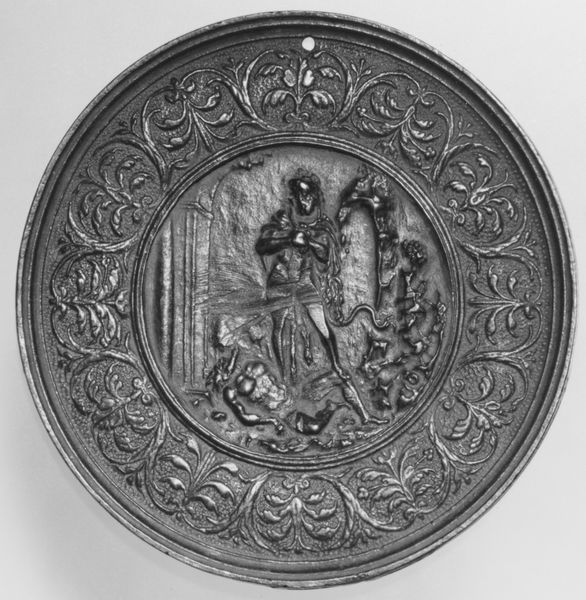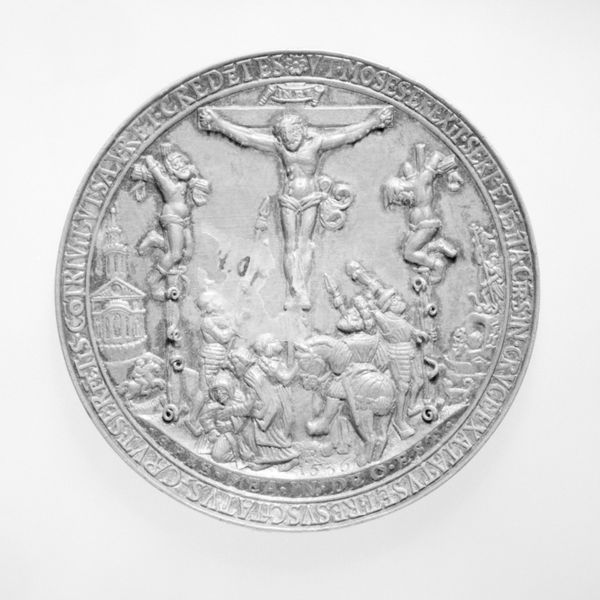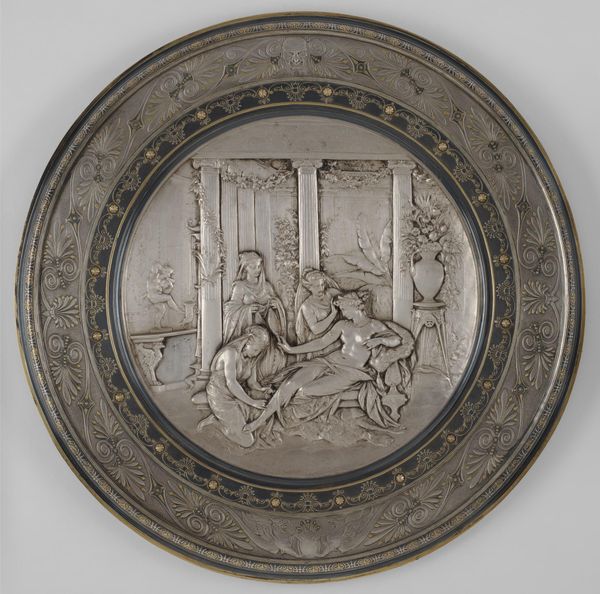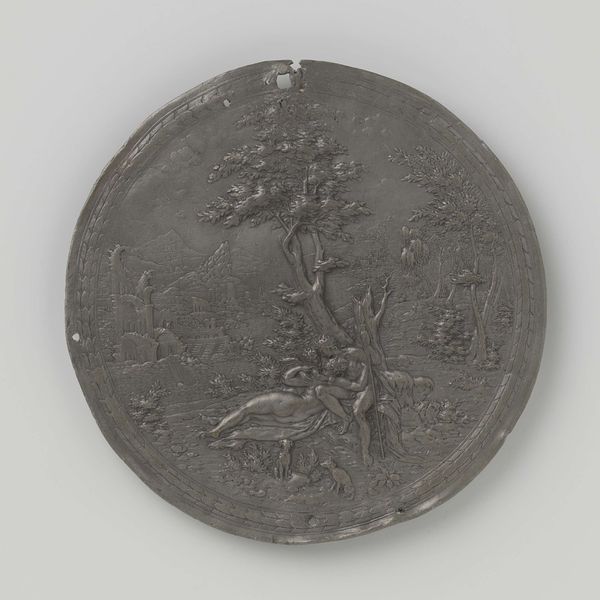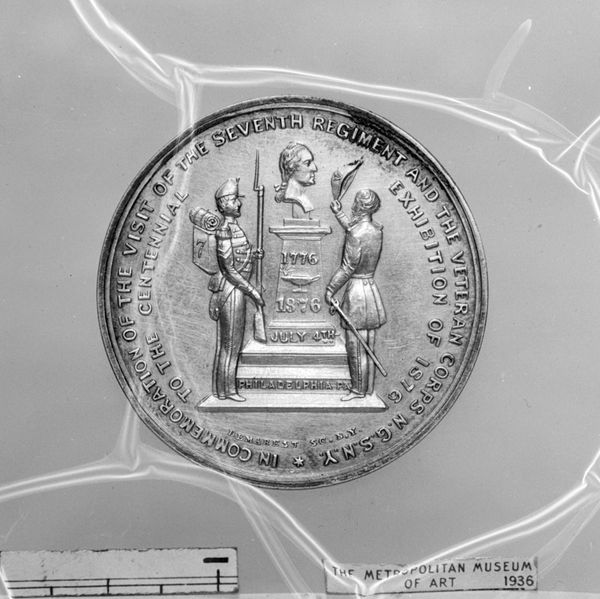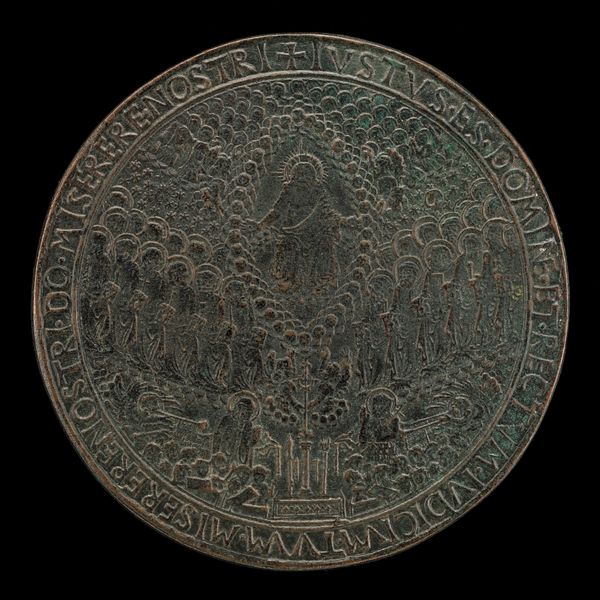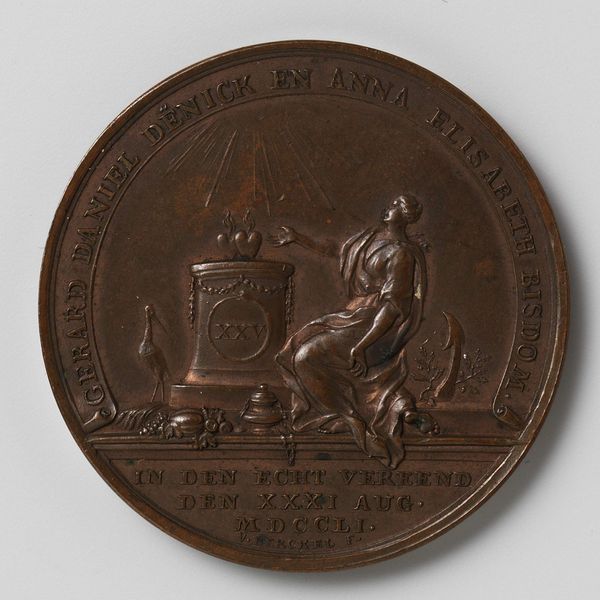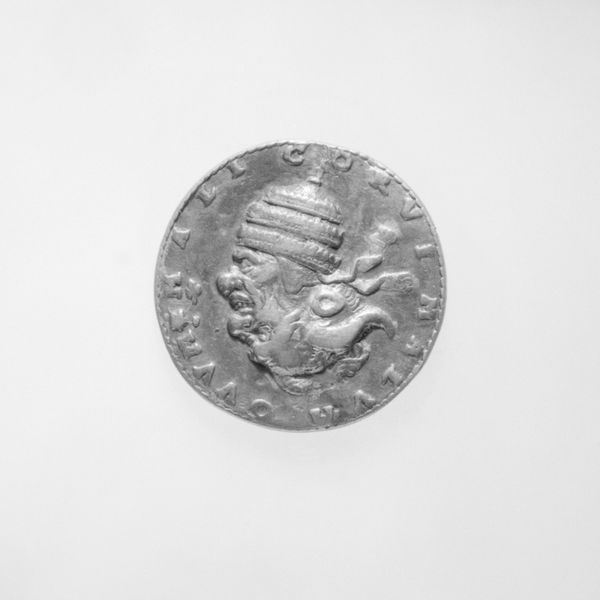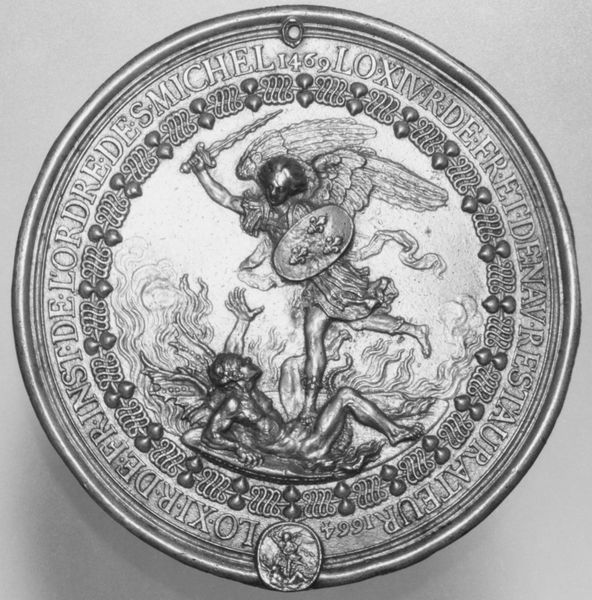
Dimensions: Diameter: 1 7/8 in. (4.8 cm)
Copyright: Public Domain
Editor: So, this is the "Wedding Medallion" by Heinrich Aldegrever, made sometime between 1600 and 1625. It’s currently housed at the Met. It's an engraving – looks like on metal – depicting a wedding scene. It feels very staged and formal to me. What strikes you about this piece? Curator: What I find compelling is the context of such medallions. Who commissioned it, and for what purpose? Was it a gift, a personal memento, or even a form of propaganda? The text encircling the image – do we know what it translates to, and how it relates to the image? Editor: I think it’s supposed to say something like, "All that I desire from the fruits of God is love." So, very on the nose for a wedding! Curator: Precisely. So it’s both a public declaration and, perhaps, a personal plea. Medallions like these also served to project an image, a carefully constructed narrative of marital harmony and piety, particularly important for families of status. Consider, too, the visual language - the clothing, the setting... Editor: You mean, how everything looks so neat and ordered? It definitely suggests a very specific social class and ideal. Were medallions common gifts at the time? Curator: Yes, absolutely. Think of them as early modern versions of wedding albums, designed not just for immediate enjoyment, but also to transmit a message across generations. Their very creation was itself a social performance. Editor: That’s a really interesting way to think about it – as a sort of carefully managed PR for a family. I was just seeing it as a quaint historical object. Curator: Exactly! By examining it through a social and political lens, we reveal so much more about the values and power dynamics of the time.
Comments
No comments
Be the first to comment and join the conversation on the ultimate creative platform.
